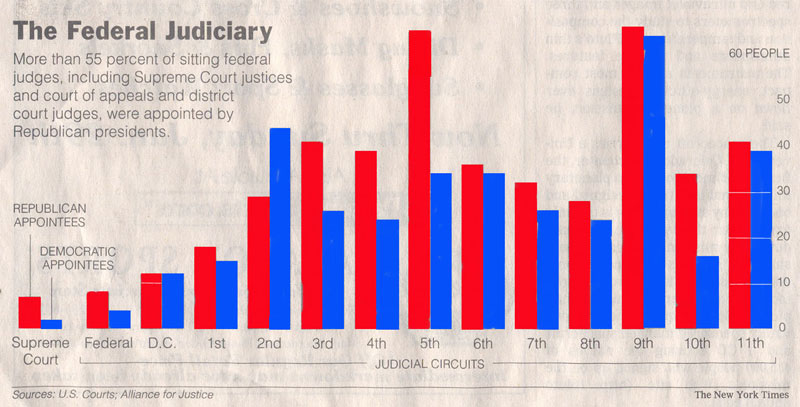The American Judical Sytem
I. Nature of Judicial Decisions
- Statutes (passed by legislatures) are
GENERAL and apply to the entire population.
- Judicial Decisions are SPECIFIC to an
individual and apply only to the specific case decided.
- determination of FACTS
- application of the LAW to the
specific facts of the case.
II Common Law: System of American & British Jurisprudence
"As distinguished from law created by the enactment of legislatures, the
common law comprises the body of those principles and rules of action,
relating to the government and security of persons and property, which
derive their authority solely from usages and
customs of immemorial antiquity, or from the judgments
and decrees of the courts recognizing, affirming, and enforcing
such usage and customs." Black's Law Dictionary (Revised
4th edition), p. 346.
III. Judicial Review
- Marbury v. Madison, 1 Cranch 137 (1803).
- Components of Judicial Review
- courts may declare national, state, and local laws
invalid if they conflict with the U.S. Constitution.
- National laws and treaties are supreme
when they conflict with state and local laws. (U. S.Constitution,
Article VI)
- The U.S. Supreme Court is the final authority on the
meaning of the Constitution.
IV. Access to the Court
- Jurisdiction
- original jurisdiction
- appellate jurisdiction
- case originated and decided in other court.
- concerns the law, not facts of a case
- federal questions (e.g., Constitution, federal
laws, or treaties)
- Supreme Court:"rule of four"
V. Judicial Appointment (Federal Courts)
- Nomination by President for a term of "good behavior"
- senatorial courtesy
- American Bar Association Evaluation (advisory only)
- professional qualifications: competence; integrity;
judicial temperment
- Bar Association ratings: well qualified; qualified;
not well qualified; not qualified
- Confirmed by the Senate
- term of "good behavior"
- Partisan Balance of the Federal Courts

VI. Judicial Appointments: California Courts
- Supreme Court and Courts of Appeal
- "Missouri Plan": Appointment & Election
- Appointment by Governor
- Approval by Commission on Judicial Appointments
- Chief Justice of the Supreme Court
- Attorney General
- Presiding Judge of the Court of
Appeals
- Retention Election (yes or no) after 1 year of
service
- Twelve Year Term then re-election
- California Superior Courts (county level)
- non-partisan election
- Six year term
- Unfilled terms appointed by Governor

